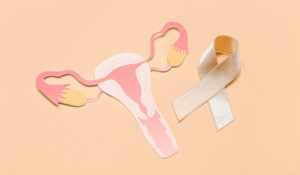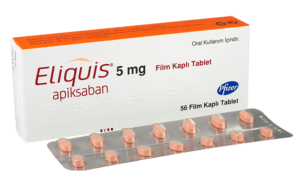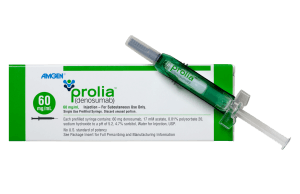
There is a clear need to improve how quickly endometriosis is identified and treated. Endometriosis Awareness Month aims to raise general awareness about this condition to catch the disease early and begin treatment plans that could greatly improve the quality of patient’s lives.
Why is Endometriosis Awareness Month important?
Raising awareness about endometriosis is essential, as many people don’t realize that severe period pain isn’t normal. The more the topic is discussed, the sooner someone with endometriosis can reach out to get the care and support they need.
What is endometriosis?
Endometriosis occurs when the tissue lining the uterus, called the endometrium, begins to grow outside of the uterus into other areas of the body. This tissue can attach to structures like the ovaries, fallopian tubes, the uterine exterior, or even further to places like the bladder, intestines, or pelvic walls.
Like the uterine lining, this tissue reacts to hormonal changes during the menstrual cycle by thickening and breaking down. However, since it cannot be expelled from the body in the menstrual flow, it becomes trapped, causing inflammation, the development of scar tissue, and often intense pelvic pain. Alongside pain, endometriosis can lead to other symptoms such as heavy periods, fatigue, digestive problems, and fertility issues.
Warning signs of endometriosis
Symptoms of endometriosis may include abdominal or pelvic pain, painful periods, and discomfort during bowel movements. Other signs can be bloating, leg pain, painful urination, and pain during or after sex. Some women might also experience constipation, diarrhea, or difficulty becoming pregnant.
How is endometriosis diagnosed?
The most reliable way to diagnose endometriosis is through tissue retrieval with laparoscopy, followed by testing the tissue in a lab. During the procedure, the doctor removes areas that look like endometriosis and sends the tissue to a laboratory. A pathologist examines it under a microscope to confirm if it is endometriosis. However, doctors may also choose to diagnose the condition in minimally invasive ways, such as through imaging tests like ultrasounds or MRIs, a pelvic exam, and/or evaluating symptoms and medical history.
Is it possible to diagnose endometriosis from an ultrasound?
Endometriosis cannot be diagnosed through ultrasound alone. However, doctors may still use transvaginal ultrasound as part of the diagnosis process. If imaging results don’t show any signs of endometriosis, it doesn’t necessarily mean the condition isn’t present.
Barriers to a proper diagnosis of endometriosis
A lack of official diagnosis guidelines
There are no official guidelines for diagnosing suspected endometriosis. Doctors usually decide whether to recommend laparoscopy based on the patient’s medical history, the doctor’s advice, and the patient’s personal preferences. Diagnosing endometriosis is also difficult because minimally invasive tests cannot provide a clear answer, and patients often experience delays in being referred to specialists.
Endometriosis may be misdiagnosed.
Endometriosis symptoms often look similar to other health problems. This, along with the tendency to dismiss women’s pain and the complicated process of diagnosing endometriosis, can result in it being misdiagnosed.
Endometriosis can be mistaken for other conditions, such as irritable bowel syndrome (IBS), large intestine tumors, colon or rectal cancer, ovarian cancer, anxiety, depression, urinary tract infections (UTIs), sciatica, fibromyalgia, pelvic inflammatory disease (PID), pelvic floor dysfunction, appendicitis, fibroids, or painful periods. There is also a low level of endometriosis awareness amongst general healthcare providers, so women may not be getting to see doctors who know what to look for for a long time.
Seeing severe period pain as ‘normal’
Many women have trouble recognizing what normal menstrual pain should feel like. Many assume that their pain is normal and something they just have to live with. This mindset, along with administering self-care methods to cope with the symptoms, likely delays any progress in the identification and treatment of endometriosis.
Feeling uncomfortable speaking about menstrual issues.
The stigma around talking about menstrual issues and the belief that menstrual pain is normal can lead to delays in getting a diagnosis. According to research, many patients have their concerns dismissed by general practitioners and feel that doctors seem to know very little about endometriosis. Likewise, healthcare professionals admitted they did not receive enough training on the condition and often lacked clear guidelines to diagnose it properly.
What are the treatment options for endometriosis?
Treatment may include medicine or surgery.
Medications for endometriosis
- Medicines like Advil and Naprosyn are types of pain relievers called NSAIDs. They can help reduce menstrual cramps.
- Hormonal birth control, like Cerazette, shots, patches, or vaginal rings, can help manage the hormones linked to endometriosis by helping to balance them.
- Gonadotropin-releasing hormone (Gn-RH) medicines help treat endometriosis by stopping the menstrual cycle and lowering estrogen levels, which makes endometrial tissue shrink.
- Progestin therapy uses a man-made version of a natural hormone that is involved in the menstrual cycle and pregnancy. It can help stop periods and slow the growth of endometrial tissue, which may reduce symptoms. There are different types of progestin treatments, including a small device placed in the uterus that releases levonorgestrel (like Mirena or Skyla), a birth control implant in the arm (Nexplanon), birth control shots (Depo-Provera), or a progestin-only pill.
- Aromatase inhibitors are medicines that reduce the amount of estrogen in the body. A doctor might suggest using them along with progestin or a combination of birth control pills to help treat endometriosis.
Laparoscopic surgery for endometriosis
A surgeon might perform this procedure using small cuts, which is called laparoscopic surgery. In some cases, a larger cut in the abdomen is needed to remove thick scar tissue. However, even serious cases of endometriosis can usually be treated with the laparoscopic method.
Hysterectomy
A hysterectomy is a surgery to remove the uterus. In the past, removing the uterus and ovaries was considered the best way to treat endometriosis. Now, many experts see it as a last option for pain relief when other treatments haven’t worked.
Raising endometriosis awareness is important
Women who think they might have endometriosis should seek medical advice, which could mean speaking with their family doctor. Patients should ask for help if they feel their periods are not normal or cause them a lot of pain or stress.
Women diagnosed with endometriosis can contribute to the collective knowledge base by sharing their experiences and educating others about the condition. Sharing information about symptoms, treatment options, and success stories can help raise awareness. Learning about endometriosis early can lead to quicker diagnoses and better management, giving young women a chance to get treatment before long-term, severe pain develops.
FAQs
What to do if I suspect I have endometriosis?
A daily symptom log can help track how symptoms affect everyday activities. It’s helpful to include details like the location of the symptoms, a description of how they feel, and a pain rating on a scale from 1 to 10.
Patients should speak up about how serious their symptoms are and how those symptoms affect their daily lives. Writing down notes ahead of time can help make the conversation with a doctor easier.
Bringing someone for support can help patients speak up for themselves. This could be a parent, partner, friend, or certified patient advocate who understands their symptoms and can explain how they affect daily life.
Endometriosis can be hereditary. Before visiting the doctor, individuals should talk to family members and write down if anyone has been diagnosed with endometriosis, struggled with infertility, or shown symptoms of the condition.
What does endometriosis feel like?
Endometriosis affects everyone differently. Some individuals experience digestive issues, such as constipation or bloating, often called “endo belly.” Others might have very painful periods or deal with constant pain throughout the month. It’s also possible for someone to have advanced endometriosis without showing any symptoms at all.
Can drinking lots of water help endometriosis?
Proper hydration and healthy bowel movements can help manage endometriosis, as they help the body eliminate toxins and excess hormones like estrogen. Since endometriosis is often fueled by estrogen, maintaining balanced hormones is essential. A healthy gut plays a key role in detoxification by removing estrogen through the colon. Poor gut health can lead to issues like bloating, gas, and constipation, which are common in those with endometriosis and may worsen symptoms.
What happens if endometriosis is left untreated?
Endometrial-like tissue growing outside the uterus can form cysts, adhesions, and scar tissue. This often results in chronic, intense pain, particularly during menstruation. It can also make it harder for many individuals to conceive.
Can endometriosis cause weight gain?
Endometriosis itself doesn’t lead to weight gain, but symptoms like bloating and fluid retention can create the sensation of added weight.

















